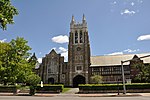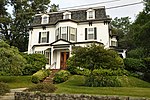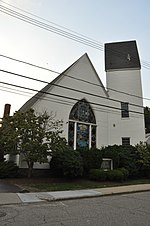West Newton station
Buildings and structures in Newton, MassachusettsFormer Boston and Albany Railroad stationsMBTA Commuter Rail stations in Middlesex County, Massachusetts

West Newton station is an MBTA Commuter Rail station in Newton, Massachusetts. It serves the Framingham/Worcester Line, and is located inside the Massachusetts Turnpike Exit 16 rotary in the village of West Newton. West Newton has had continuous rail service since 1834. The station consists of a single low side platform serving one of the line's two tracks, with small crossings to access trains on the far track. West Newton is not accessible; a renovation for accessibility is planned.
Excerpt from the Wikipedia article West Newton station (License: CC BY-SA 3.0, Authors, Images).West Newton station
Massachusetts Turnpike, Newton West Newton
Geographical coordinates (GPS) Address Nearby Places Show on map
Geographical coordinates (GPS)
| Latitude | Longitude |
|---|---|
| N 42.3478 ° | E -71.23075 ° |
Address
Massachusetts Turnpike
Massachusetts Turnpike
02465 Newton, West Newton
Massachusetts, United States
Open on Google Maps









